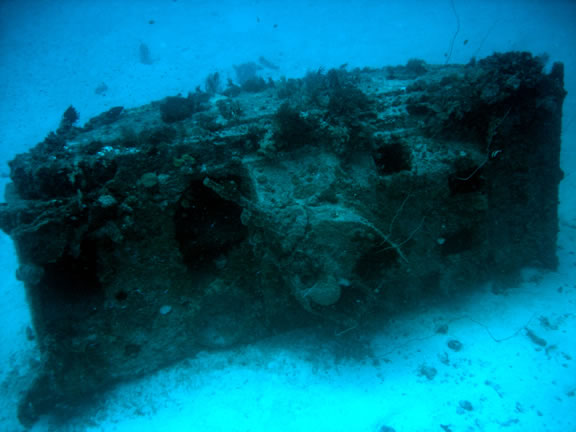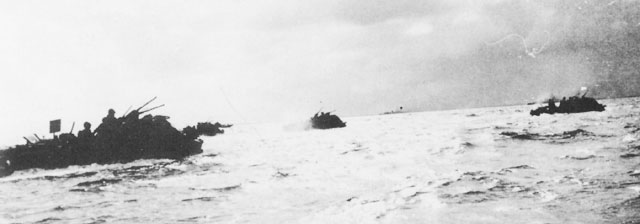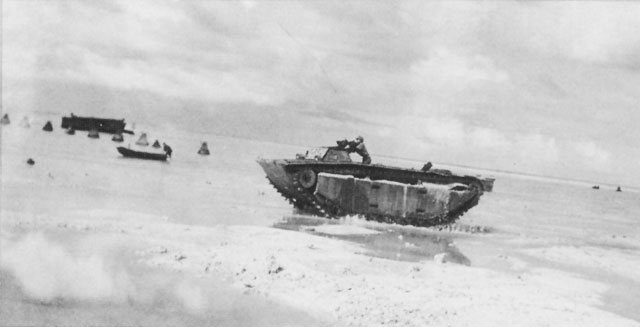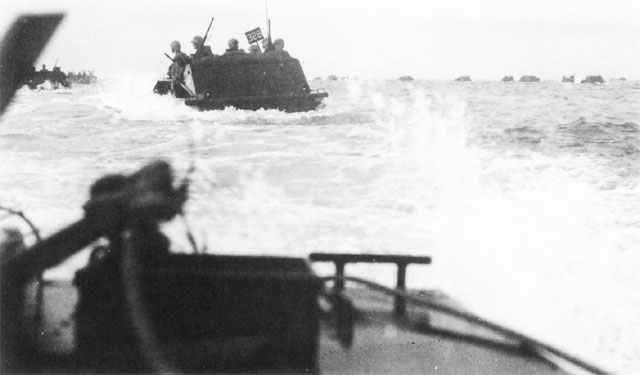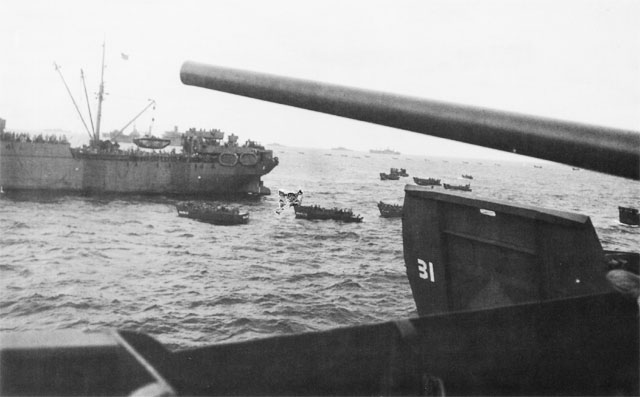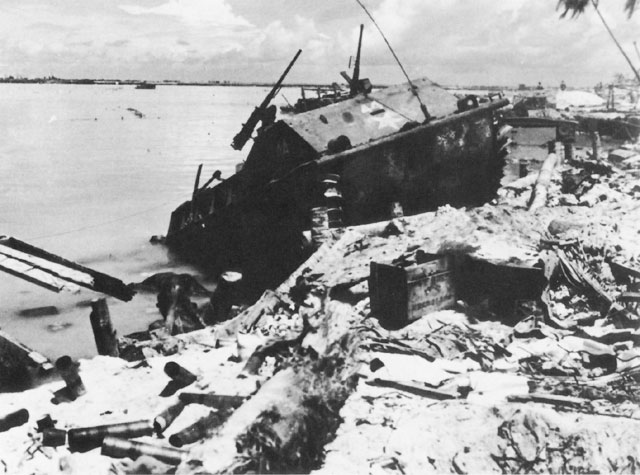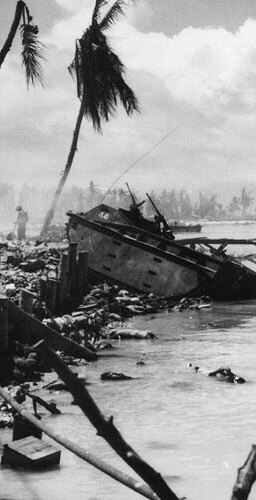I think that because the PTO was a secondary theatre of war that the powers that be decided to not limit or impede the aquisition of LVT’s to them because of the nature of the ground war there had to come from the sea so most of the LVT’s went to the Pacific and not to the ETO. The ETO had fewer assault landing to contend with so they relied on the Higgins boat to deliver the troops and goods to the beaches and left the specialized LVT’s to the Marines.
LVT(A)-1 (1942, A stands for armored)
Based on the LVT-2, this fire support version had an armored (6 to 12 mm) hull. It was fitted with a turret nearly identical to that of the Light Tank M3, with a 37 mm Gun M6 in mount M44, and also carried two rear-mounted machine guns. 510 units produced.
LVT-4
Although usually associated with the Pacific theatre, toward the end of the war LVTs were employed in Europe as well. The US, British and Canadian Army used the Buffalo in the Battle of the Scheldt, during the Operation Plunder, along the Po River, across the river Elbe and in a number of other river crossing operations.
LVT(A)-4 (1944)
Another fire support version, with 75 mm Howitzer Motor Carriage M8 turret armed with a 75 mm howitzer, in some cases replaced with the Canadian Ronson flamethrower. A single .50 cal machine gun was installed on the ring mount above the turret rear. In the late production vehicles the heavy machine gun was replaced with two M1919A4 .30 MGs on pintle mounts and one more in the bow mount. 1,890 units produced





